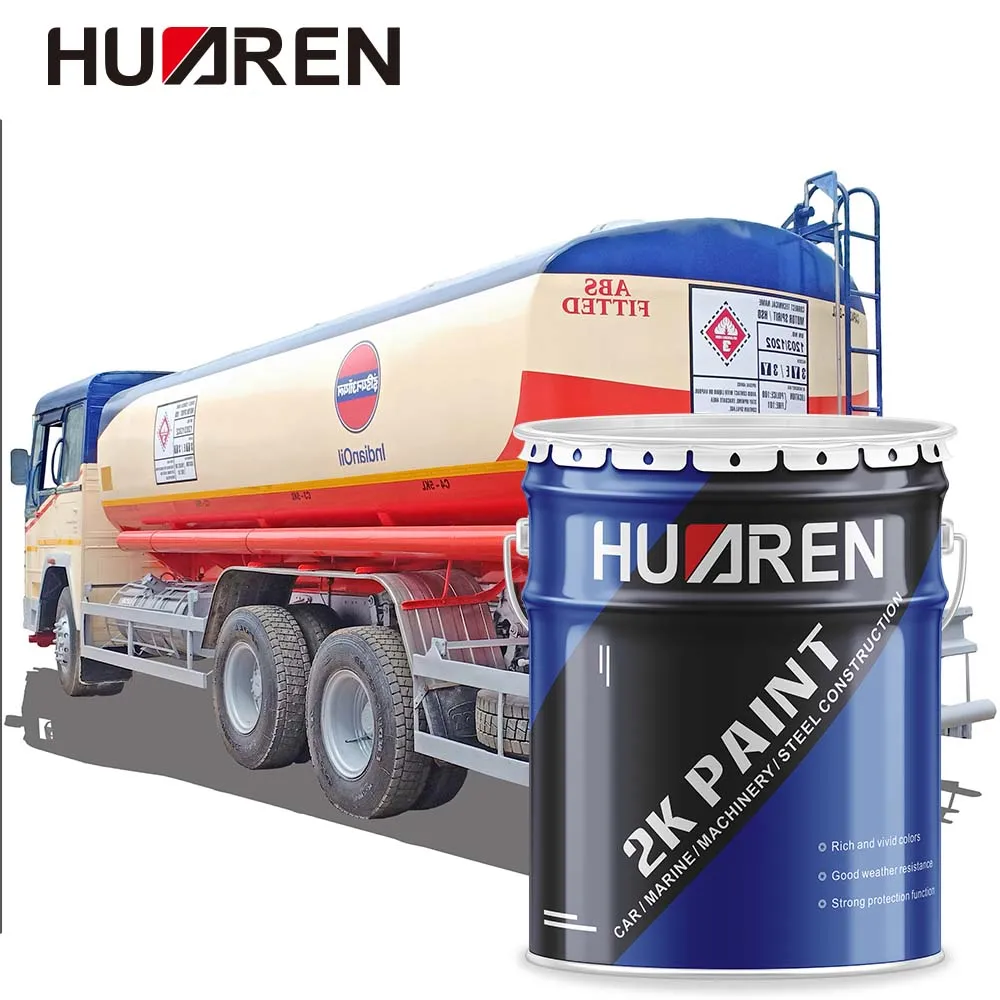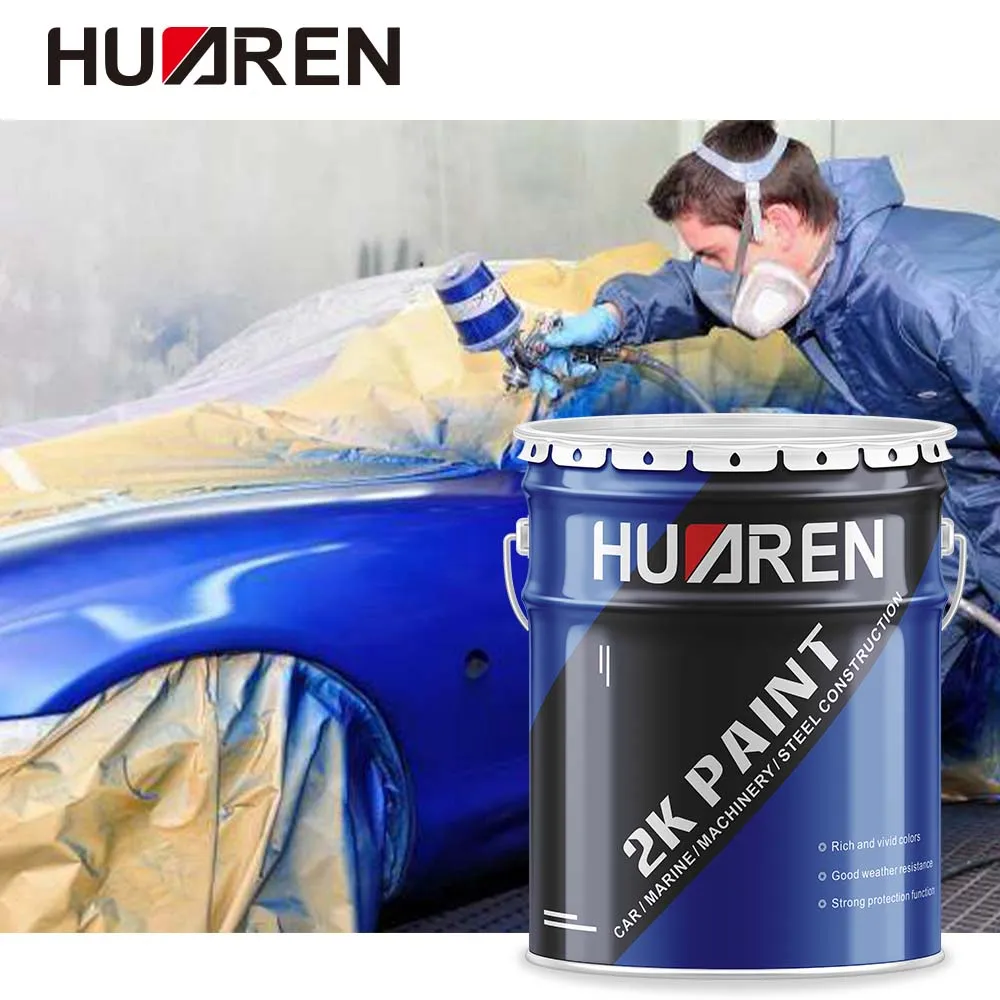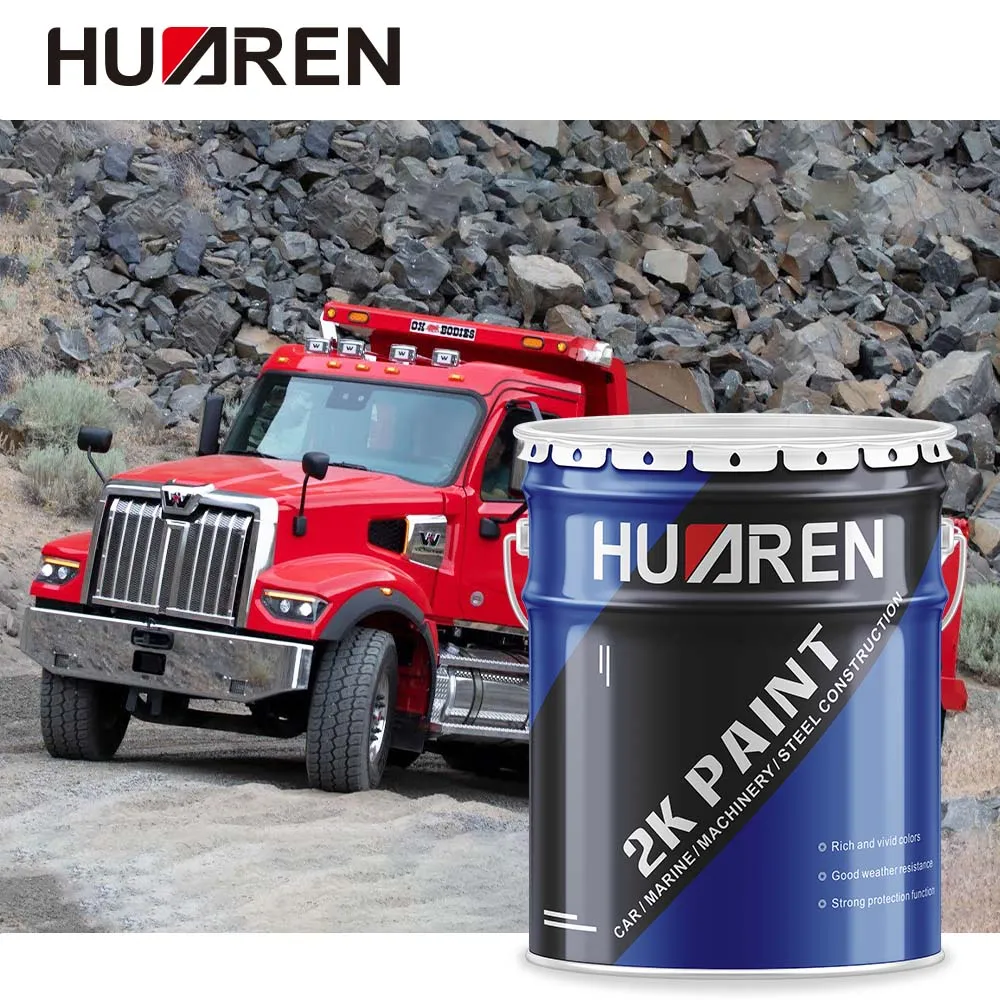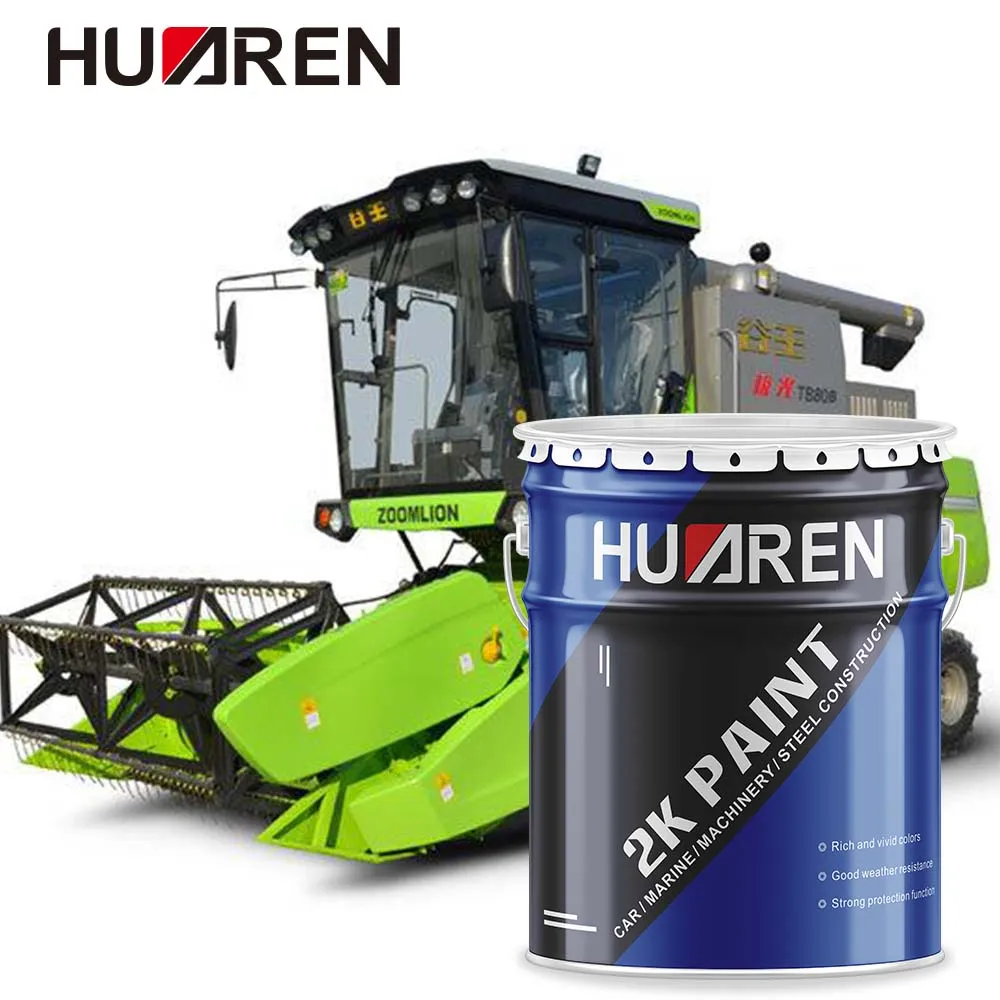When painting a car, choosing the right number of coats is directly related to the overall beauty and protection of the car, especially for high-performance two-component paint such as 2K car paint. During the spraying process, how to determine the right number of layers has become a concern for many people.
This article will analyze in detail the number of spray coats required for 2K automotive paint and the specific role of each layer of paint to help you make the best decision when painting.

Why does 2K car paint need to be sprayed in layers?
When spraying 2K car paint, it is generally not recommended to apply a thick coat at one time, because spraying too thick at one time will lead to uneven coating, increase drying time, and even cause problems such as cracking, bubbling or sagging of the paint film. Layered spraying can help the paint adhere to the surface more evenly and form a smooth protective film.
Advantages of layered spraying:
● Even coverage: Multi-layer spraying can ensure that the surface paint is evenly distributed to avoid color difference and mottled.
● Layer-by-layer reinforcement: Each layer of paint gradually thickens during the curing process, which can enhance the wear resistance and corrosion resistance of the surface.
● Reduce construction defects: Multi-layer application helps reduce sagging and avoid uneven thickness.
In summary, choosing multi-layer spraying can not only improve the aesthetics, but also improve the durability of the coating.
How many layers of primer are needed for 2K automotive paint?
When spraying 2K automotive paint, primer plays a vital role, mainly used to improve adhesion and provide additional anti-corrosion protection. 2K primer is usually sprayed in one or two layers to ensure that the paint surface is sufficiently flat and uniform.
The role of spraying primer:
● Enhance adhesion: Primer can closely bond with the metal surface of the car, provide better adhesion, and make subsequent coatings less likely to fall off.
● Provide anti-corrosion protection: Primer forms a protective layer on the metal surface, effectively isolating air and moisture to prevent metal rust.
● Cover defects: Primer can cover minor imperfections on the surface of the car and provide a smooth foundation for the upper layer of paint.
Number of primer spray layers: Usually 1-2 layers. For repair spraying of new cars, 1 layer of primer is usually sufficient. For minor scratches or uneven surfaces, spraying 2 coats of primer is more effective.

How many coats of topcoat are needed to achieve the best effect?
After the primer is sprayed, the topcoat is an important determinant of the appearance of the car. Usually 2 to 3 coats of topcoat are selected in 2K car paint spraying. The topcoat not only provides color to the car body, but also increases the gloss and appearance effect.
The role of topcoat spraying:
● Provide color layer: The topcoat is the key coating to present the color of the car, which gives the color effect to the appearance of the vehicle.
● Increase gloss: After the 2K topcoat dries, it forms a smooth surface, which enhances the brightness and gloss of the vehicle.
● Improve weather resistance: The topcoat can protect the primer from UV rays, wind, sand and rain, and extend the service life of the coating.
Number of topcoat spraying layers: usually 2-3 layers. 2 coats of topcoat can meet most needs, but in order to ensure the saturation and gloss of the color, especially dark or special colors, 3 coats of topcoat can bring better performance.

How many layers of 2K clearcoat are needed to protect the topcoat?
Clearcoat is the last protective layer in the 2K automotive coating system, which plays an important role in improving the durability and surface gloss of the car body. Clearcoat not only forms a hard outer protective layer, but also improves the waterproof, anti-corrosion and scratch resistance of the coating. Generally, 2 layers of clearcoat are the best, but in some special high-gloss or wear-resistant environments, 3 layers of clearcoat are more suitable.
Main functions of clearcoat:
● Protect the topcoat: Clearcoat can reduce the direct damage of ultraviolet rays, acid rain and corrosive substances to the topcoat.
● Improve gloss: Clearcoat has high transparency and forms a bright gloss layer on the surface of the car.
● Enhance scratch resistance: The hardness of the cured clearcoat is high, which can effectively prevent the surface of the car body from scratches due to minor collisions.
Number of clearcoat spray layers: It is recommended to spray 2-3 layers. Two layers of clearcoat can provide relatively solid protection, but if you want to enhance the gloss effect or further improve durability, you can spray three layers.
How to grasp the waiting time for multi-layer spraying?
When performing multi-layer spraying, waiting time is crucial. The waiting time between coats is called "flash-off time", which refers to the process of the paint turning from liquid to solid. Before the flash-off time is up, it is not advisable to spray the next coat directly, otherwise it will easily cause the paint surface to wrinkle, bubble, or even fall off. For 2K automotive paint, the flash-off time for each coat is usually about 5-15 minutes, but the specific time will vary depending on the construction environment and paint formula.
Factors affecting the waiting time:
● Ambient temperature and humidity: In the case of high humidity or low temperature, the paint dries slower and the waiting time needs to be extended.
● Paint formula: Different brands and types of 2K paints have slightly different drying times. It is recommended to operate according to the manufacturer's instructions.
● Coating thickness: Thicker coatings require longer flash-off time. Ensure that the paint is evenly dried before spraying the next coat.
Ensuring sufficient waiting time between coats can avoid construction defects and improve the overall adhesion and aesthetics of the coating.
Will spraying too many layers affect the quality of the paint film?
Spraying too many layers may indeed have an adverse effect on the quality of the coating, which is mainly reflected in the following aspects:
● Increased cracking risk: Too thick a paint film will produce stress under the action of thermal expansion and contraction, causing the coating to crack.
● Extended drying time: With each additional layer of paint, the overall drying time will be extended, affecting construction efficiency.
● Reduced adhesion: The interlayer adhesion of an overly thick coating decreases, and peeling may occur after a long time.
Therefore, the number of spray layers should be strictly controlled during the spraying process, and the coating thickness should not be increased blindly.

How to judge whether the spraying of the coating has achieved the ideal effect?
In the spraying process of 2K automotive paint, several key indicators can be used to judge whether the coating has achieved the ideal effect:
● Color saturation: Observe whether the color of the topcoat is uniform and saturated, and whether there is color difference.
● Gloss: Judge whether the gloss of the coating has achieved the ideal effect by the spraying effect of the clearcoat.
● Paint film uniformity: Ensure that there is no sagging, bubbling or wrinkling on the surface.
If the spraying effect is found to be unsatisfactory, the defective parts should be repaired and polished before spraying the subsequent coating.

